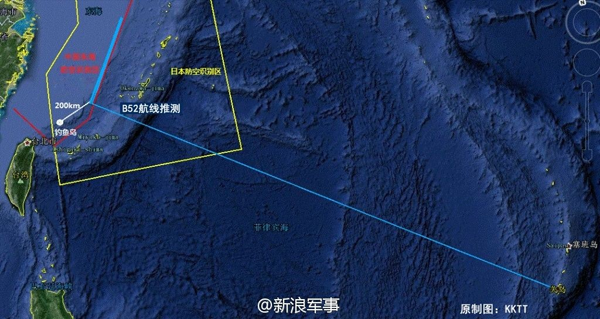For my daughter's birthday party recently, we couldn't buy the helium filled balloons she wanted. Is there really a shortage or is it artificial? Watching the balloons in Macy's Parade you have to wonder. Will the new law solve the problem?
The Hot Air That Lifts Macy's Thanksgiving Day Parade May Be Going Down
There's plenty of
helium outside
of our planet. Typically found at the bottom of huge gravity wells, for instance, it's a big part of gas giant Jupiter's
makeup. In fact, after hydrogen, it's the most abundant element in the
universe, since it is created by the nuclear fusion process from hydrogen in stars such as our sun. But on rocky planets with weaker gravity such as Earth it's tougher to find—and keep.
Released deep underground during radioactive decay of the
elements that formed the Earth, helium has always been in finite supply.
It's getting scarcer. By some estimates the Earth's subterranean
supply—found alongside natural gas deposits (though not the kind being
fracked from shales)—will be gone in 40 to 60 years.
Helium Source
Helium is named for the
Greek God of the Sun,
Helios. It was first detected as an unknown yellow
spectral line signature in sunlight during a
solar eclipse in 1868 by
French astronomer
Jules Janssen. Janssen is jointly credited with detecting the element along with
Norman Lockyer. Jannsen observed during the solar eclipse of 1868 while Lockyer observed from
Britain. Lockyer was the first to propose that the line was due to a new element, which he named. The formal
discovery of the element was made in 1895 by two
Swedish chemists,
Per Teodor Cleve and
Nils Abraham Langlet, who found helium emanating from the
uranium ore cleveite.
After an oil drilling operation in 1903 in
Dexter, Kansas produced a gas geyser that would not burn, Kansas state geologist
Erasmus Haworth collected samples of the escaping gas and took them back to the
University of Kansas at Lawrence where, with the help of chemists
Hamilton Cady and David McFarland, he discovered that the gas consisted of, by volume, 72% nitrogen, 15%
methane (a
combustible percentage only with sufficient oxygen), 1%
hydrogen, and 12% an unidentifiable gas. With further analysis, Cady and McFarland discovered that 1.84% of the gas sample was helium.
This showed that despite its overall rarity on Earth, helium was concentrated in large quantities under the
American Great Plains, available for extraction as a byproduct of
natural gas.
This enabled the United States to become the world's leading supplier of helium.
7 Things You Had No Idea the World Is Running Out Of
Popular Mechanics
The federal government, which sets helium prices, announced in April
that helium prices would spike from $75.75 per thousand cubic feet (Mcf)
in FY 2012 to $84 per Mcf in FY 2013. (Last year, prices rose only 75
cents.) This price spike, along with uncertain federal policy (and a
peculiar industry setup to begin with), is threatening to create a
shortage.
This bipartisan bill, introduced by Natural Resources Committee
Chairman Doc Hastings (R-WA), Ranking Member Ed Markey (D-MA), Rep. Bill
Flores (R-TX) and Rep. Rush Holt (D-NJ), builds on the reforms
made in 1996 to better reflect the uses and demands for helium in the
year 2013.
It would prevent global helium shortages and promote market-based
reforms by implementing a three-phase system, that would include
semi-annual actions, for operating the Federal Helium Reserve over the
next decade until the Reserve is emptied of helium. This would ensure
that there remains a stable, predictable supply of helium and that
taxpayers are getting a fair return for this resource.
-
Phase A - The Federal Helium Reserve will continue operating under current law until one year after the date of enactment.
-
Phase B - Semi-annual helium auctions will be established to promote competition and ensure a better return for taxpayers.
-
60% of the crude helium will be made available to refiners and those with existing tolling agreements.
-
20% of the crude helium will be available to any bidder
(including refiners) that is pre-approved by the Secretary of the
Interior and has a proven interest in helium. Ensures that those who
purchase helium will have access to the existing pipeline
infrastructure.
-
As the helium sold to other bidders (as outlined in the point
above) is refined, then an additional amount of the crude helium, up to
the full remaining 20%, will be made available by auction to refiners
and those with existing tolling agreements.
-
The Secretary of the Interior will set a minimum sale price
for auctions based on a confidential survey of current market crude
helium prices and a review of auction prices. The Secretary has the
authority to increase or decrease the minimum price based on market
conditions. There are limits on the amount any one bidder can purchase
to avoid disruption of supply.
-
Funds from the auctions will go to the Helium Production
Fund, used to operate and maintain the Reserve. Excess revenue will be
directed to the general Treasury.
-
Phase C – Starting when there is 3 billion cubic feet of
helium remaining in the Reserve, commercial sales of helium will end and
the remaining helium will only be available for federal national
security and scientific needs.
Other notable provisions in the bill include:
- Increasing transparency and preventing unexpected supply
disruptions by requiring the Bureau of Land Management to make more
information available online regarding planned maintenance closures of
the Reserve, the duration of the closure and efforts to minimize any
impacts to the supply chain.
- Requiring the federal government to work with state geological surveys to complete a national helium gas assessment.
- Establishing coordinated research on helium-3 isotope that could be used for national defense and clean energy development.










